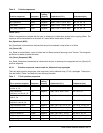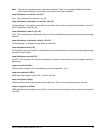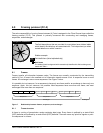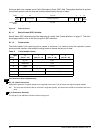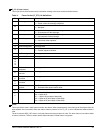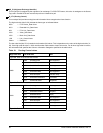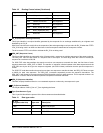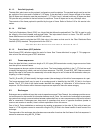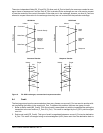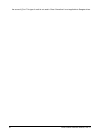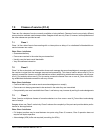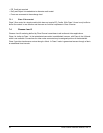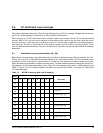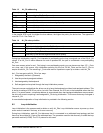
28 Fibre Channel Interface Manual, Rev. D
6.1.1.3 Data field (payload)
The data field, also known as the payload, is aligned on word boundaries. The payload length must be an inte-
ger multiple of four bytes and is limited to 2,112 bytes. If the data field is not an integer multiple of four bytes,
valid fill bytes are inserted to meet the requirement. F_CTL bits 0 and 1 indicate how many fill bytes are used.
Fill bytes are only permitted in the last frame of a sequence. These fill bytes can be any valid byte value.
The contents of the frame payload is specified by the type of frame. Refer to Section 9.0 for link service infor-
mation.
6.1.1.4 CRC field
The Cyclic Redundancy Check (CRC) is a 4-byte field that follows the payload field. The CRC is used to verify
the integrity of the frame header and payload fields. This helps detect errors in a frame. The SOF and EOF
frame delimiters are not included in the CRC calculation.
The algorithm used to calculate the CRC field value is the same as that used in the Fiber Distributed Data
Interface (FDDI) standard. The polynomial for the CRC is:
x
32
+ x
26
+ x
23
+ x
22
+ x
16
+ x
12
+ x
11
+ x
10
+ x
8
+ x
7
+ x
5
+ x
4
+ x
2
+ x + 1
6.1.1.5 End-of-frame (EOF) delimiter
End-of-frame (EOF) delimiters signal the end of a frame. See “Frame delimiters” on page 17. This page con-
tains a list of the various types of EOF delimiters.
6.2 Frame sequences
Since the data field has a maximum length of 2,112 bytes (528 transmission words), larger amounts of data
must be split into several frames.
Frame sequences always contain at least one frame. The frame header subfields in the F_CTL field are used
to identify the beginning, middle, and end of a frame sequence. The SEQ_ID and SEQ_CNT fields are used to
identify the order of the frames for reassembly in the event they arrive out of order at the destination when par-
ticipating in a fabric topology.
The OX_ID and RX_ID fields identify the larger context (the exchange) of which this frame sequence is a part.
The frame sequence itself may be part of an exchange and is identified by the SEQ_ID field in the frame
header. The R_CTL field of the frame header identifies the category of information in all the frames of the
sequence. All of the frames within the same sequence are required to have the same category.
6.3 Exchanges
Exchanges are an additional layer that controls operations across Fibre Channel. An exchange provides a con-
trol environment for the transfer of information between two N_Ports. You can think of exchanges as an operat-
ing system that controls communications between nodes when two or more sequences are required to transmit
data or commands. Exchanges even keep track of operations that occur in opposite directions (sender to
receiver and receiver to sender). Here’s a short explanation of how this occurs:
One of the N_Ports establishes an exchange by sending a sequence to the other N_Port with at least one
frame in it. The originator names its resources using the OX_ID field in the frame header of each frame of the
exchange.
The responder of the exchange also allocates resources after it receives the first frame of the first sequence. It
names its resources using the RX_ID field.



